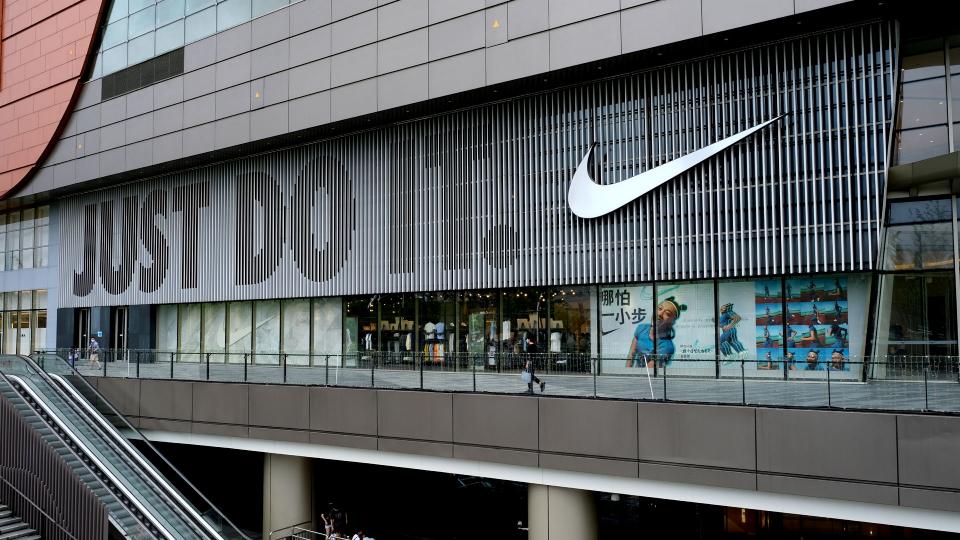Present in Advertising and in the most varied Marketing actions of companies, the slogan plays an important role with potential consumers and customers of the brands that use them.
Examples of slogans that fulfilled their There is no shortage of purposes and you must certainly remember many.
If you came here wanting to create one for your company and your brand, let’s talk about everything you need to know to create a successful one. .
What is a slogan?
The word slogan is a typical foreign term widely used in Advertising and Marketing.
Etymologically speaking, it was used in the past by Scottish clans in battles, as a kind of battle cry, which is easier to understand when analyzing the original and which was sluagh-ghairm tanmay (sluagh “army”, “host” + gairm “cry”), but suffered corruption producing the slogorn and a second, generating the now used slogan.
In practical terms and in the environment In Advertising and Marketing, a slogan is the use of short sentences and even a single word, which aims to establish a positioning, an identity, a link between the consumer and the brand / company.
Slogans in a more subtle or more direct way, but always brief, seek to highlight some unique, striking and perceptible characteristic in the eyes of established customers and potential consumers.
They may also be associated with a product or service and there are companies that have different slogans for different products in their line.
Even political marketing has benefited from its power and it is not difficult to remember candidates who have consolidated their image and memory. of them, sometimes using jingles or their combined name, in order to help the memorization process.
Why is a slogan important?
No it is essential to have one, as it is with the brand / name and the logo and there are even many brands worldwide. and famous, who don’t have one, but a good slogan can help in the work of fixing it in the mind and creating a quick and persistent identification.
Good examples reinforce this, so much so that when listening to some of the most famous, most immediately associate the brand that created them. And vice versa, that is, when seeing or hearing certain brands, we remember their respective slogans.
Among all that a slogan can do, we have:
- Adherence – it is almost impossible to dissociate some slogans from their brands, as well as vice versa. For some generations and audiences, as is the case of sugarcane spirit 51, which was often used in informal conversations as a synonym for having “a good idea” ;
- Positioning – translating what the brand does, or thinks, or prioritizes is another possible paper. In “terrible against insects… against insects”, the SBP insecticide emphasizes in the repetition that the product intends not to be harmful to its consumers, that is, is safe;
- Branding – the constitution of the image of a brand and what it represents, often goes through a slogan that synthesizes its essence, as in “From the Bauducco family to your family” and which is reinforced in the commercials in which father and son make a traditional recipe, showing that there is more than one company behind the products, but people just like you;
- Worldview – in a world of paradigms, patterns and sameness, Apple counters all this with “Think different” (think different), challenging consumers to think outside the box and the PC domain, mostly represented by Microsoft;
- Top Of Mind – being at the top of consumers’ minds is another s goals pursued by many brands and in this sense, some of the examples we present here, contribute a lot to this, such as “impossible to eat just one” by Elma Chips or “whoever asks for one, asks for bis”, and in the second, it is unnecessary to say which brand it refers to;
- Values – what has value for people as consumers is also often explored, such as the trust that the product needs to have, as in the case of “you know, you trust”, used by Volkswagen;
- Identification – people also need to identify with the brands they consume and in the case of women’s fashion, in “from woman to woman” Marisa stores tells her audience that whoever is behind everything is another woman who understands her needs and desires;
- Quality – a subtle example that relies on association, with a good dose of irony to highlight a quality and which in turn is something that the consumer values, is implied in the phrase “without a doubt, Brastemp” and which replaces the catchphrase from the past, “this is not a Brastemp” and which suggested that all other brands did not have the same quality as the brand’s products;
- Convenience – in times when almost everything can be done by a click or touch, what can’t, needs be convenient, easy and versatile, as is the case of filling up the car “at the Ipiranga gas station”, after all you can find a lot of other things there.
That is, a slogan can have many capabilities according to its conception and proposal .
It is worth remembering that in the case of some, a sentence, no matter how good it is, does not do all the work. It is frequent that a set of other Marketing actions both support and reinforce the message, as well as give it meaning.
This is the case of another famous one: “There are things that money does not buya. PFor all the others, there is Mastercard”.
For years the company ran commercials in which he presented unique and memorable situations, which are priceless for those who lived them and always ended with the unforgettable phrase, which ended up being famous.
Based on the saying “this is priceless”, which was even registered as an internet domain, suggests that everything that is “purchasable”, that is through a Mastercard card, to the detriment of any other form of payment.
7 tips to create a good slogan
Creating a good slogan is not a simple task, as it requires a good dose of creativity, especially when it is part of something broader, such as the aforementioned branding work.
However, there are some tips that, if combined, make it easier to get a good result.
It’s not enough to look and sound beautiful. For all that we have seen so far, there must be meaning, both for the company and, above all, for consumers.
1. Message
The starting point is the definition of the message that you want to convey and that will be implicit or explicit in the slogan. As we have seen in the examples presented so far, some require interpretation and others are more direct, but all of them, without exception, intend to communicate something.
In “just do it”, Nike refers to what the consumer should do. “Just do it, no matter what” and which basically means: “no matter what sport you choose, practice and there will always be a product Nike to whatever you choose”.
People don’t think with this depth, but the subtlety lies in the fact of what remains in people’s unconscious. It is a subliminal message that is implied by the audiovisual of the commercials.
2. Persona or target audience
Defining the persona or target audience is also essential, both to know as well as possible what matters, what has value and what needs and desires of the one to whom the message is addressed, such as to adopt the language and communicate effectively.
But things may not even be that absolute and it is the case of “Havaianas, everybody wears”, in which we can highlight some points:
- There is not a single persona or even a target audience, serving men, women, young and not so young people, after all “everything world uses”;
- It’s so good, that “Everybody uses“;
- No matter the situation, “everyone uses”;
- It is versatile and offers different models, colors and sizes and therefore “everyone uses it “;
Ma s it takes care and not wanting to embrace the world. In this case, the campaign and the slogan are indeed appropriate and make sense, but not for many other products.
3. Differential
Good phrases usually highlight the brand’s differential and that can be conveyed in the message in a more direct or more subtle way.
In the group of direct and best known, we can certainly mention BomBril and its “1001 utilities”. At the same time, in all commercials its quality in relation to competing products was implied. Even the brand’s poster boy – Carlos Moreno – whenever he publicized a product of the brand, he had at some point in his speeches the phrase: “ has two differences, the name Bom Bril and…”
Another brand that relied on its differentials, before the rebranding it underwent, was the aforementioned Havaianas and whose slogan was: “Havaianas, the legitimate ones, don’t deformm, do not release the straps and do not tem smell”.
4. Sensations and feelings
What types of emotions should your message arouse in your consumer?
Whether through identification, memory, highlight values and principles, or even by sensations.
It is this kind of appeal that exists behind the slogan “ I love all this very much”, from McDonald’s. It doesn’t matter if it’s the Quarteirão, the Big Mac, the potatoes, the pies, the combos and even how each thing is made, it doesn’t matter, I love it!
The visual identity of the establishments, the graphics and drawings on the papers that cover the trays, everything refers to the sensorial and, added to the aromas and flavors, involve sensations.
Cosmetics and beauty products brands are supported by slogans that explore sensations. and feelings of self-esteem, as is the case of Boticário and “where there is love, there is beauty”.
Here, many times the slogan reflects the essence of the business in a more subjective dimension, but very affective.
5. Conciseness and simplicity
In general, they must be composed of short sentences or even a single word, containing short and well-known words, and must also be easy to pronounce, so as not to create confusion or even errors in listening or even writing.
Imagine remembering a slogan with 10 words!
Of course there are exceptions and the best example of this, is Mastercard, but we have seen that it is supported by a wide advertising campaign.
In the opposite direction, there is the already mentioned and well-remembered case of Nike or the even shorter one “Intel Inside”, in which the seal affixed to notebooks or desktop cases, suggests that although it cannot be seen, there is an Intel processor inside, which is synonymous with technology, performance and reliability, qualities that the brand is proud to boast.
The advantage of shorts like Intel is that they can even appear next to the brand logos in certain situations, as is also the case with Panasonic (“Ideas for life”) and once again, from Nike, which appears next to the logo on many materials.
6. Communication
Knowing how to communicate through the words used is part of the formula for success.
Everyone wants to pass on qualities, concepts and good ideas, but that doesn’t mean using adjectives that directly praise the brand. To say that it is the number 1 brand in quality, in addition to being a common place, because many people make the same claim, is at least suspicious and impolite.
Contrary to what is supposed, it does not provide differentiation, because many people use it exactly like that, simply because they are unaware of the principles behind creating an elegant and suggestive slogan.
Seara does this, but in an indirect way. , saying “Try Seara. The quality will surprise you”. She does not directly say that the quality is high, but invites us to try and prove it.
Or we can quote Brahma and “a number 1“, in which the number 1 can be interpreted as the first in the public’s choice or the most remembered (Top Of Mind), or even the first in flavor, but whatever the interpretation, be first in any of these criteria, it is very good.
But never forget that slogan is not just speech.
It must translate into everything you do and that’s how it should be perceived by customers, whether in the service provided, or in the enjoyment of products / services. If not, no Marketing, Advertising and communication strategy will make them succeed.
7. Brainstorming
Bringing together different people and presenting all the bases of what should guide the creation of the slogan and brainstorming is a good way to enrich the creative process and produce new ideas.
Choose the best ones, always taking into account what we have seen so far, such as number of words, use of adjectives, sensations, values and principles, desires and needs, perception on the part of of consumers.
Consider the sound of the slogan, reading it aloud and asking others to say it. Different people will give different intonations and pronunciations, helping you to evaluate how it will be when reproduced in real conditions.
Imagine how it can be part of other Marketing actions, its adaptation to your sites, on social networks, in printed material, packaging and anything else that is convenient to use.
Conclusion
Creating and using a good slogan is closely linked to your Marketing work, your relationship with your audience and the image they have of your brand.









